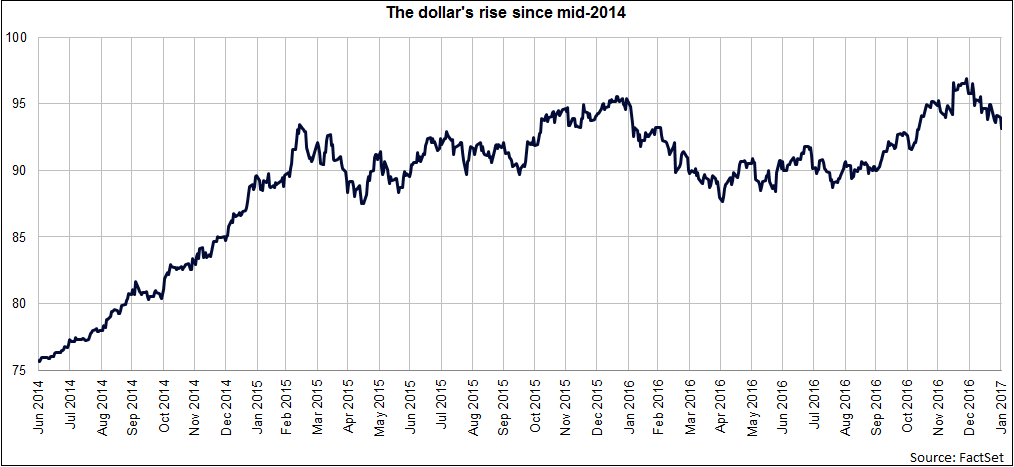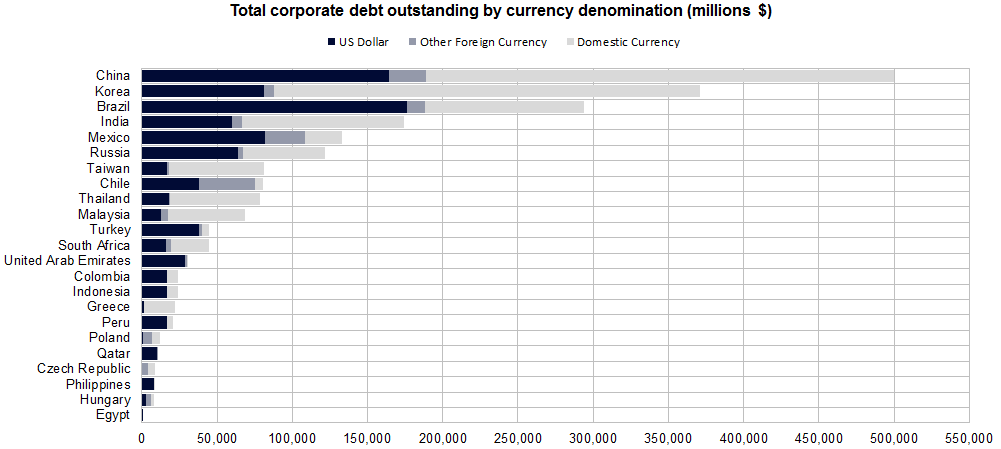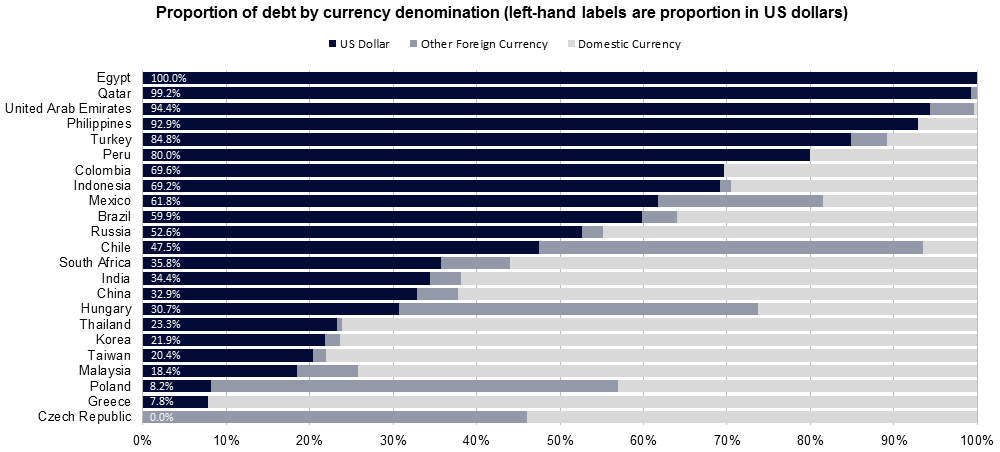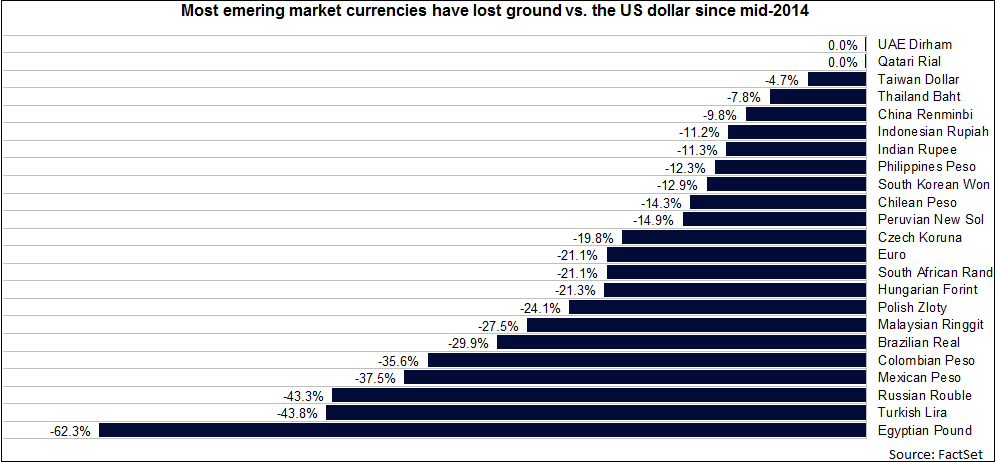The strong dollar, buoyed by low oil prices, continued anticipation for increasing interest rates, and a fall in value of the euro and British pound, has widespread global economic implications. As a result, we are seeing everything from shifts in trade balances to fluctuations in the value of countries’ foreign exchange reserves. The soaring greenback also affects emerging market companies exposed to fluctuations in the exchange rate between the dollar and domestic currencies via their dependence on dollar-denominated debt.
The International Monetary Fund projects that emerging market economies will be responsible for most of the world’s economic growth in 2017 and 2018, continuing a trend that has been firmly established over the past few years. Debt is often utilized to finance that growth, and oftentimes companies in emerging markets issue bonds denominated in U.S. dollars to attract foreign investors that don’t want to expose themselves to currency risks. This means, however, that the firms bear the burden of foreign exchange risk, and when the value of their domestic currencies falls against the greenback, they’re faced with increased cost servicing their debts.
What Does the Dollar Cost?
By exactly how much has the dollar strengthened? And how much are emerging market companies depending on debt? The Federal Reserve’s trade-weighted U.S. dollar index is up 23% from mid-2014 through this past January. This is matched by a longer-term trend of emerging market firms’ increasing reliance on debt financing, measured by the aggregated debt-to-asset ratio for the MSCI Emerging Markets index.


The debt-fueled growth strategy in emerging markets is clear, but how much of that debt is denominated in U.S. dollars? Looking at all active corporate bonds whose parent firms are domiciled in one of the 23 countries MSCI classifies as emerging market reveals an interesting picture. Of the $2.2 trillion outstanding debt analyzed, 53.1% is denominated in domestic currency, 40.2% in U.S. dollars, and 6.7% in other foreign currencies.


Some of the countries with the highest proportion of dollar-denominated debt (e.g., Turkey, Russia, Mexico, Brazil) are also home to some of the worst-performing domestic currencies. The Turkish lira, Russian rouble, Mexican peso, and Brazilian real are down 43.8%, 43.3%, 37.5%, and 29.9% respectively versus the dollar since mid-2014.

A strengthening dollar can also help emerging market economies. Companies that export goods to the United States can see benefits when their products are cheaper from the perspective of American companies and consumers. Countries that hold on to lots of U.S. dollars in foreign exchange reserves realize an increase in their value. Tourism-related companies could also see additional money from Americans looking for more bang for their buck when they take vacations.
But in many cases, the benefits do not outweigh the risks of rising debt servicing costs. And with some economists expecting continued appreciation in the value of the dollar this year, relief is nowhere in sight.
